What are the benefits of ground cover plants, and where should you use them? Our expert has the answers
These are the key reasons why no yard should be without these hard-working, versatile plants

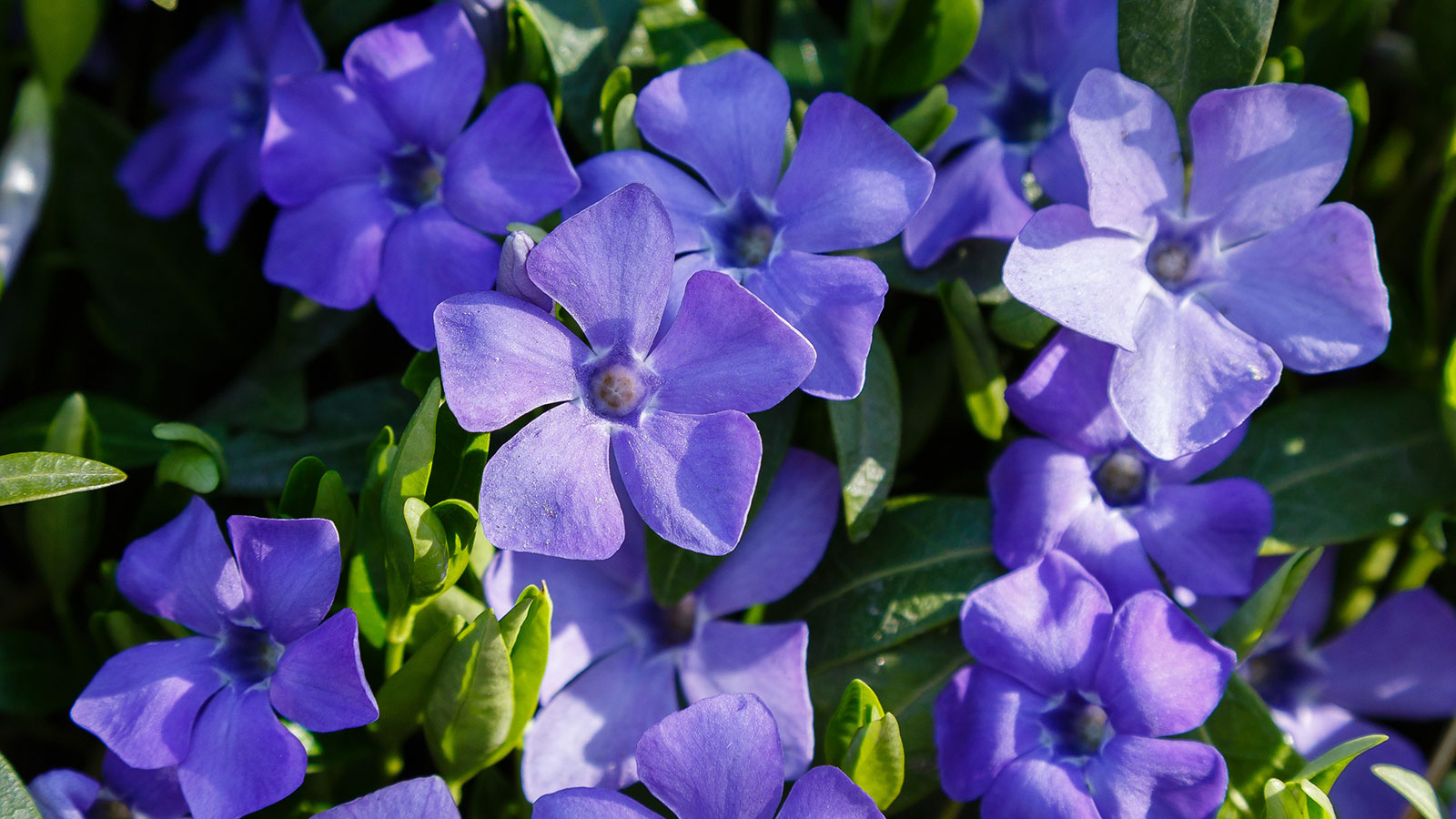
Ground cover plants rarely get the credit they deserve, which is unfortunate because they are incredibly useful, growing them has many benefits, and they can be used in a wide variety of ways in any planting scheme.
While most yards are designed to draw our attention to spectacular and tall showy plants, the best ground cover plants go about their work in the background, often without much of a fanfare.
They fill gaps, can thrive in tricky areas where little else will grow, help stabilize the soil and draw different areas of your yard seamlessly together.
The 7 key benefits of ground cover plants
Ground cover plants are those that creep and spread, rarely growing above three feet, often hardy, resilient to extremes of weather and easy to grow and maintain. So why wouldn’t you want to add some to your backyard?
Here we take a look at the key benefits of ground cover plants, and how best to use them in your plot.
1. Year-round interest
Many ground cover options are evergreen plants, making them ideal for year-round interest in the backyard.
Choose a variety with glossy or variegated leaves for extra impact. This is important when choosing plants for shade, as anything that helps them catch the light and shine out of the dark will add beauty to your yard.
Design expertise in your inbox – from inspiring decorating ideas and beautiful celebrity homes to practical gardening advice and shopping round-ups.
Many varieties are also ideal for drought tolerant planting, making them perfect for sunny gardens and dry soil types. You can help them establish strongly after planting by watering plants well and mulching generously to help the soil retain moisture.
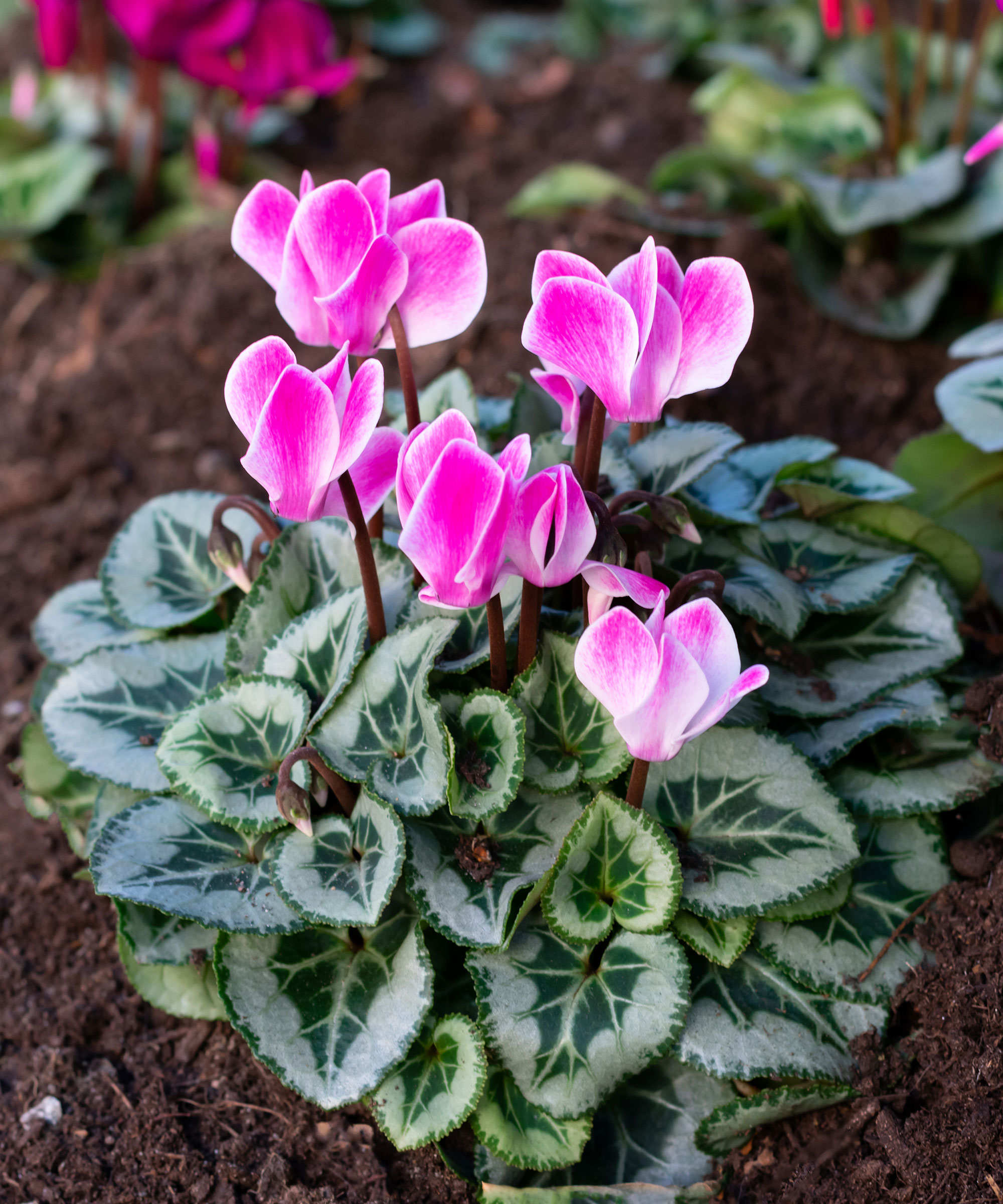
Cyclamen hederifolium has pretty flowers and striking leaves, it spreads fast and thrives in shady areas
2. Easy to care for
A major benefit of ground cover plants is that many of them are worth considering when planning a low maintenance border. Once they have established and are growing well they need relatively little tending and they provide a perfect base to offset taller varieties.
We have a pretty, evergreen Vinca minor, one of my favorite purple plants, growing down a tricky sloping area of the garden. It is fast-growing, but all it needs is a slight trim every fall to keep it in check. For the rest of the year it is left alone and it flowers from April right through the summer.
Similarly, our clumps of hardy geraniums form pretty mounds of bright pink and purple flowers over attractive foliage, and only need a trim after flowering and a feed at the start of spring.
Whether you opt for fast-growing ground cover plants or ones that grow a little more sedately, they will all need some care when they are first planted to help them establish strongly. Get rid of weeds sprouting up around and among them, keep them free from pests, and make sure their soil stays damp, but once they start to spread they can often be left to their own devices.
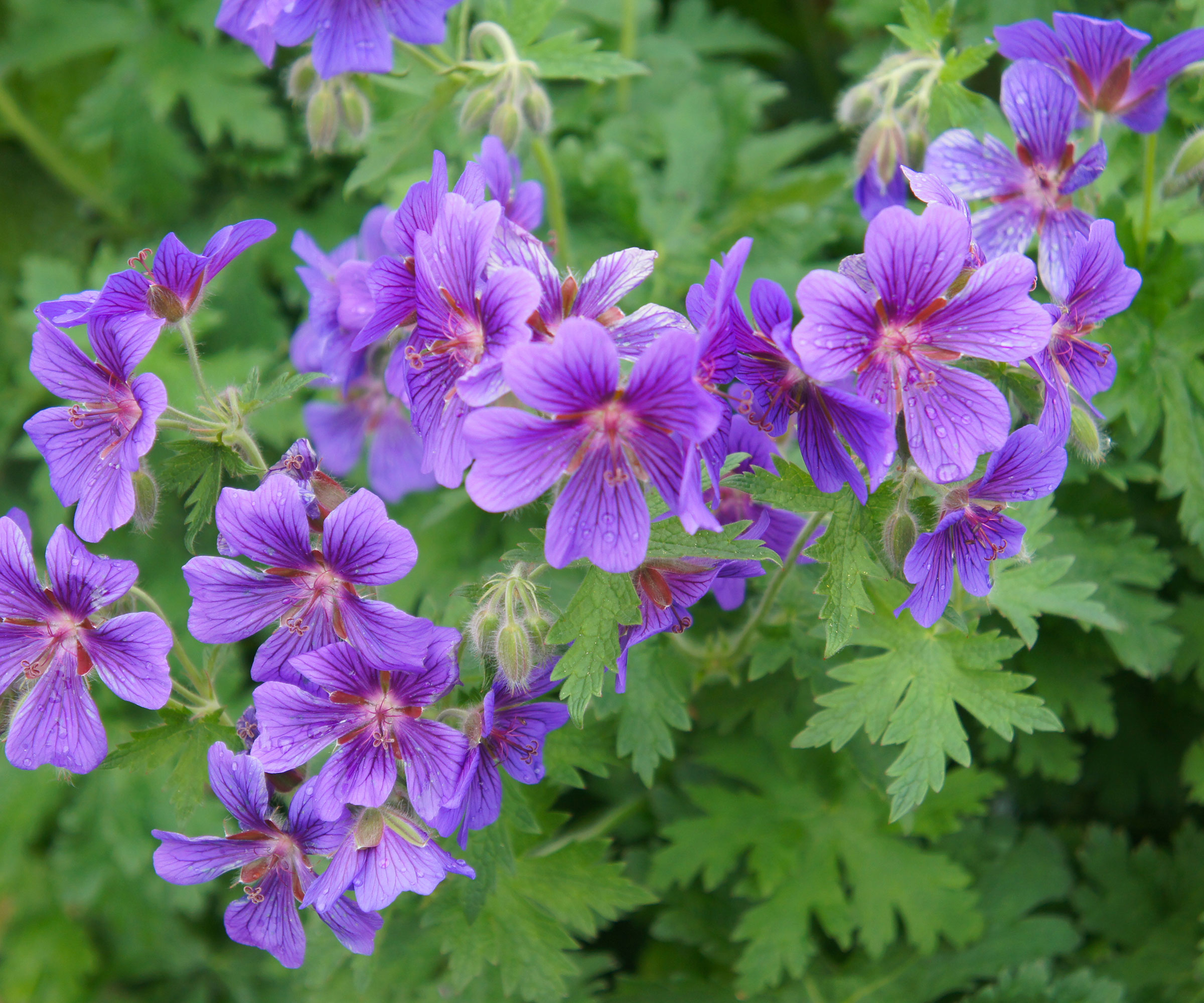
Hardy geraniums are excellent low maintenance ground cover plants
3. They block out weeds
Once ground cover plants start to spread they effectively block any weeds from taking root. Their habit of carpeting areas of the yard lets them cover the soil and stop sunlight penetrating below their leaves so nothing can grow beneath them.
You will still need to weed between newly planted ground cover before it starts to spread and get established, but once it is in its groove there is one less gardening task to do!
Removing weeds among plants growing closely together can be a bit tricky so I like to use a weeding tool like this Fiskars Ergo Scratch Tool Garden Weeder from Amazon.
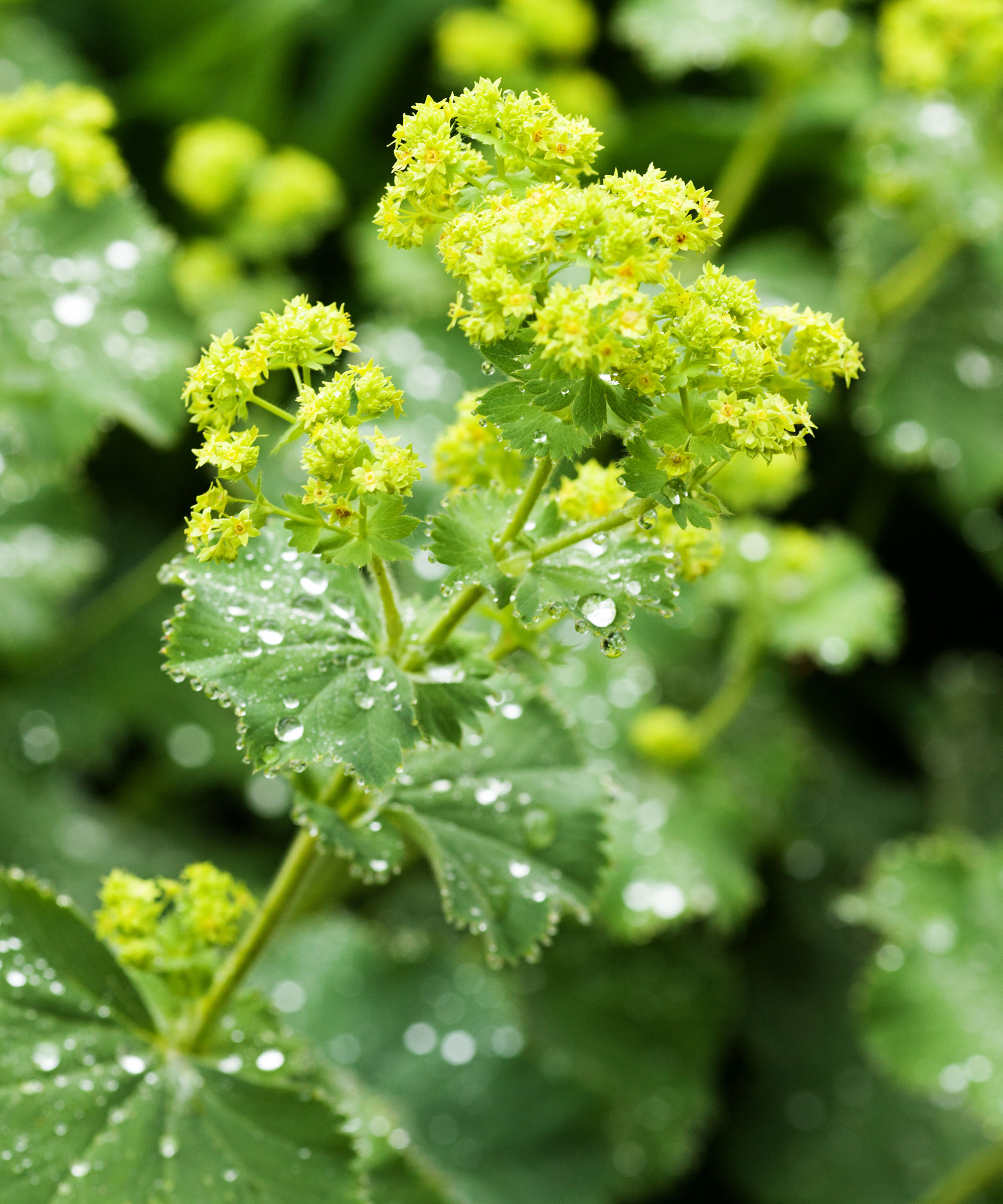
The broad leaves of ladies mantle (Alchemilla mollis) makes it a useful ground cover plant for blocking weeds
4. Improve your garden soil
Because ground cover plants blanket large areas, one of their many benefits is that they block the drying effects of sunlight and wind, helping to keep the soil cool and damp.
Their roots are also excellent for binding soil and holding it in place, especially if your yard is sloping, causing loose soil to pool in certain areas, or has poor, thin soil that gets displaced by rain and quickly loses its nutrients.
Many hardy herbs and rockery plants such as alpine strawberries can tolerate poor soils. They are also fast-growing, clump-forming, often evergreen and have pretty flowers.
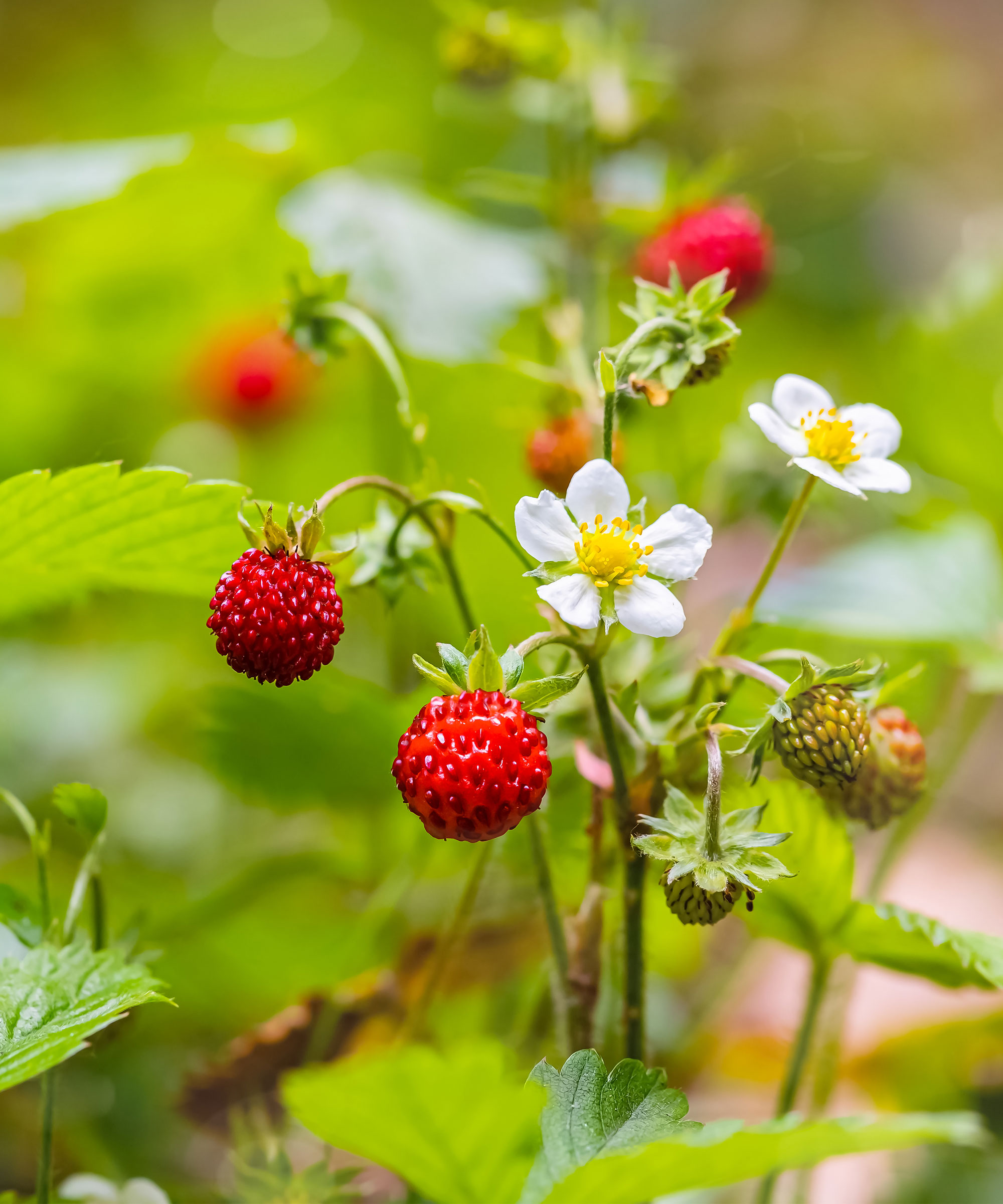
Alpine strawberries spread well and can also tolerate light shade, making them ideal for planting under hedges and trees
5. Add softness to hard features
Most backyards are designed with paths, walls and stylish patios or areas of decking made of brick, stone and wood.
These can sometimes jar with the planted areas of the yard and this is where ground cover plants come into their own as softening agents.
Newly laid paths can cut a stark line through lawns and borders, but if you plant their edges with fast-growing ground cover plants, such as aromatic herbs that release their scent as you pass by, the edges are blurred creating a softer, more welcoming feel.
Similarly, trailing plants look very attractive tumbling over the edge of brick planters and wide walls, taking the edge off sharp corners and creating a more gentle look.
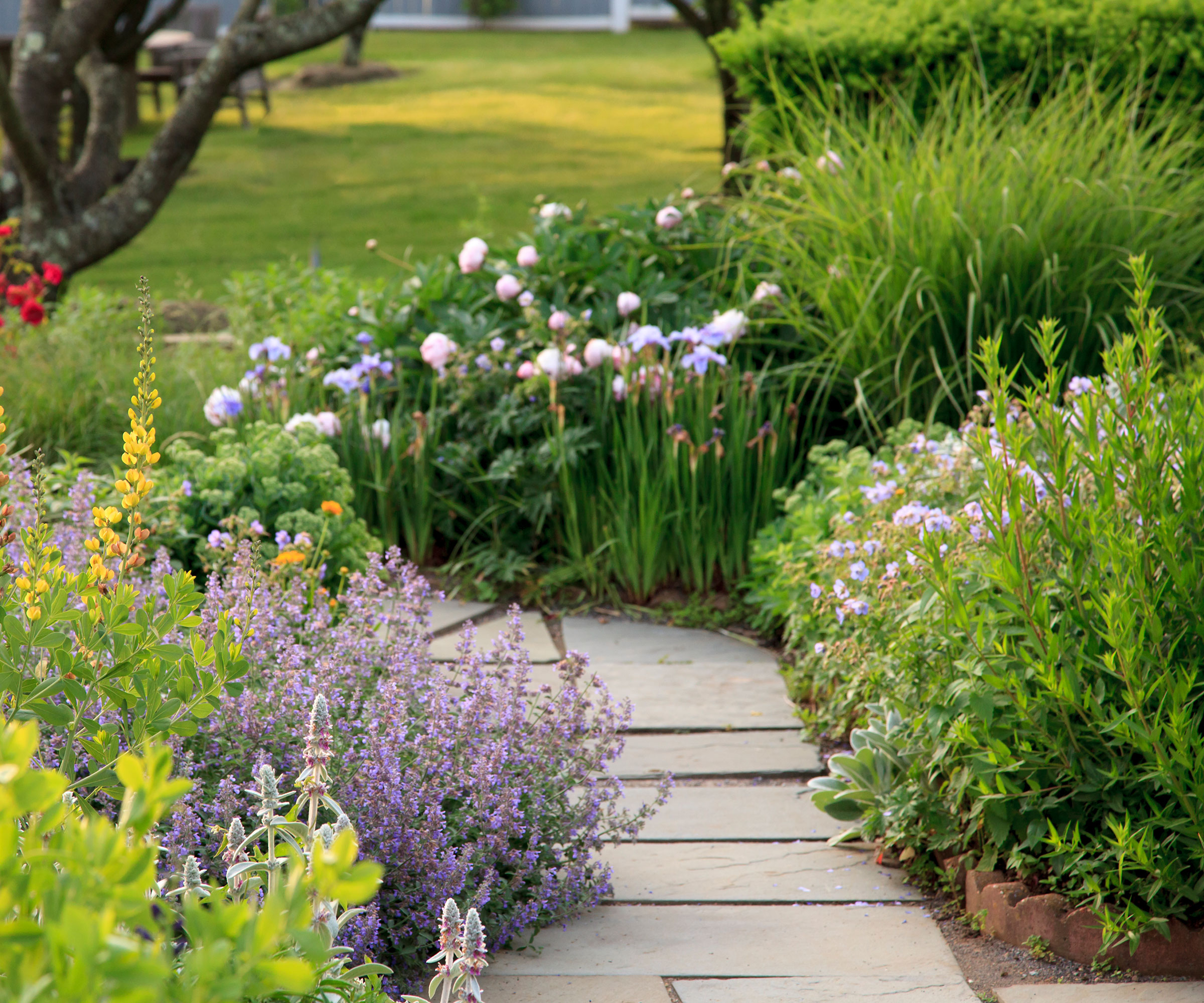
Use ground cover plants to soften the edge of paths and hard features
6. Climate-proof your garden
We are all aware of the effects of climate change and how increased episodes of extreme weather are altering the way we garden.
Prolonged freezes, heatwaves, and flash floods are becoming increasingly common, and the easiest way of seeing your yard safely through these times is to work with the climate, not against it.
One of the hardest areas of the garden to maintain in extreme periods of drought, flooding and freezing is the lawn. It takes a lot of time, effort and money to get a scorched or waterlogged lawn back to good condition and more gardeners are wondering if it is worth it.
Instead of replacing it with paving or artificial turf, consider laying a tapestry lawn. These are made up of tough ground cover plants such as thyme and chamomile, sedums, tough low-growing grasses and white clover.
As long as the plants you choose all have the same requirements they will thrive and quickly knit together to create a scented, flower-filled, pollinator-friendly area that needs no mowing and little watering or fertilizing, making it low-maintenance and better for the environment.
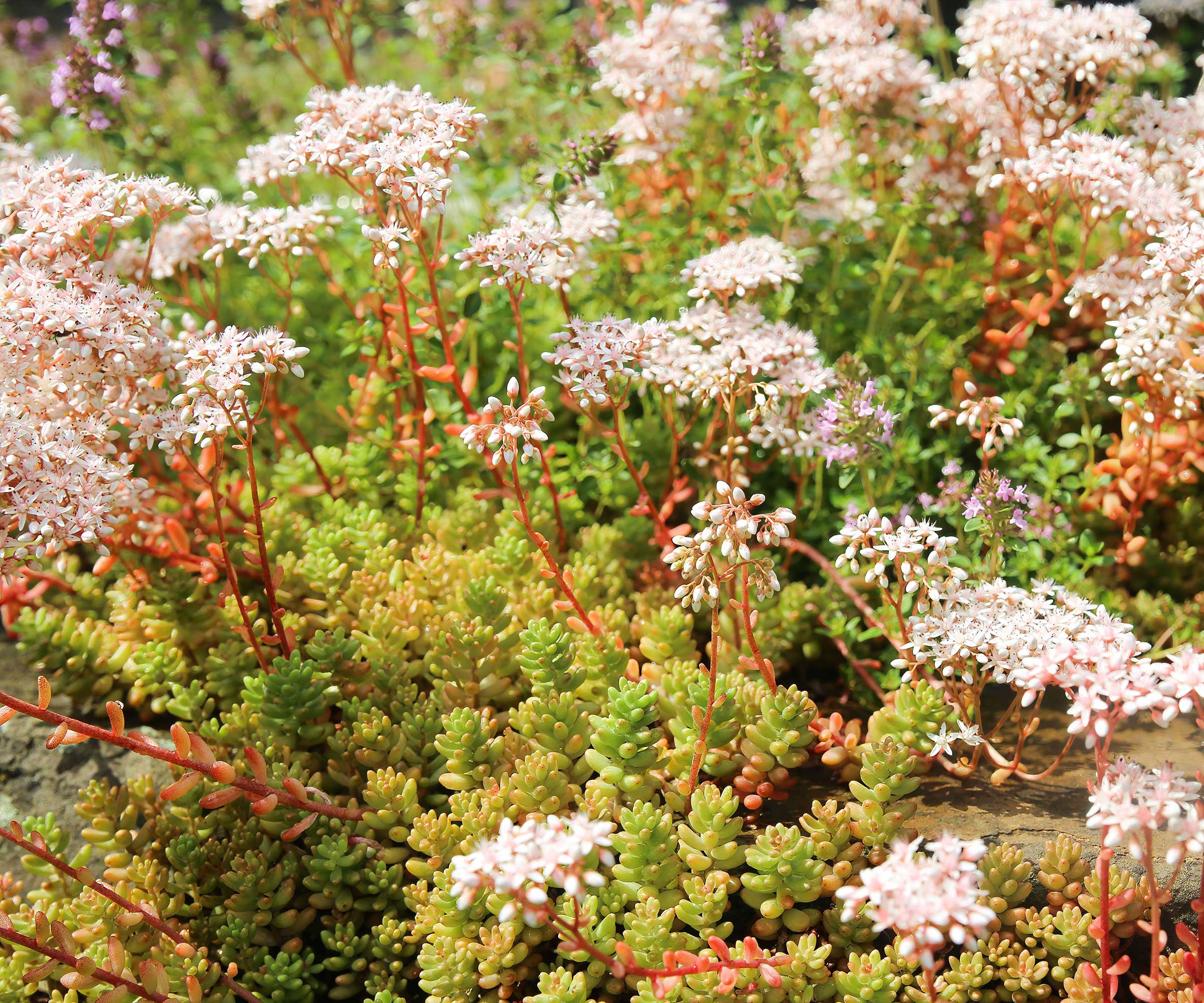
Sedums and herbs such as thyme and chamomile knit together to form a beautiful, climate-beating tapestry lawn
7. Showcase statement plants
Eye-catching statement plants such as canna lilies, dahlias and climbing roses tend to get all the glory in the garden but they are given a helping hand by their low-growing companions.
When planning a garden, use clever underplanting to fill low spaces in planters and borders, providing a dazzling contrast to the taller plants.
Contrasting colors, plants with eye-catching foliage, ornamental grasses, choosing different shapes of plants – short spires of flowers, hanging flowers, low flowers – can all work well to create a stunning backyard.
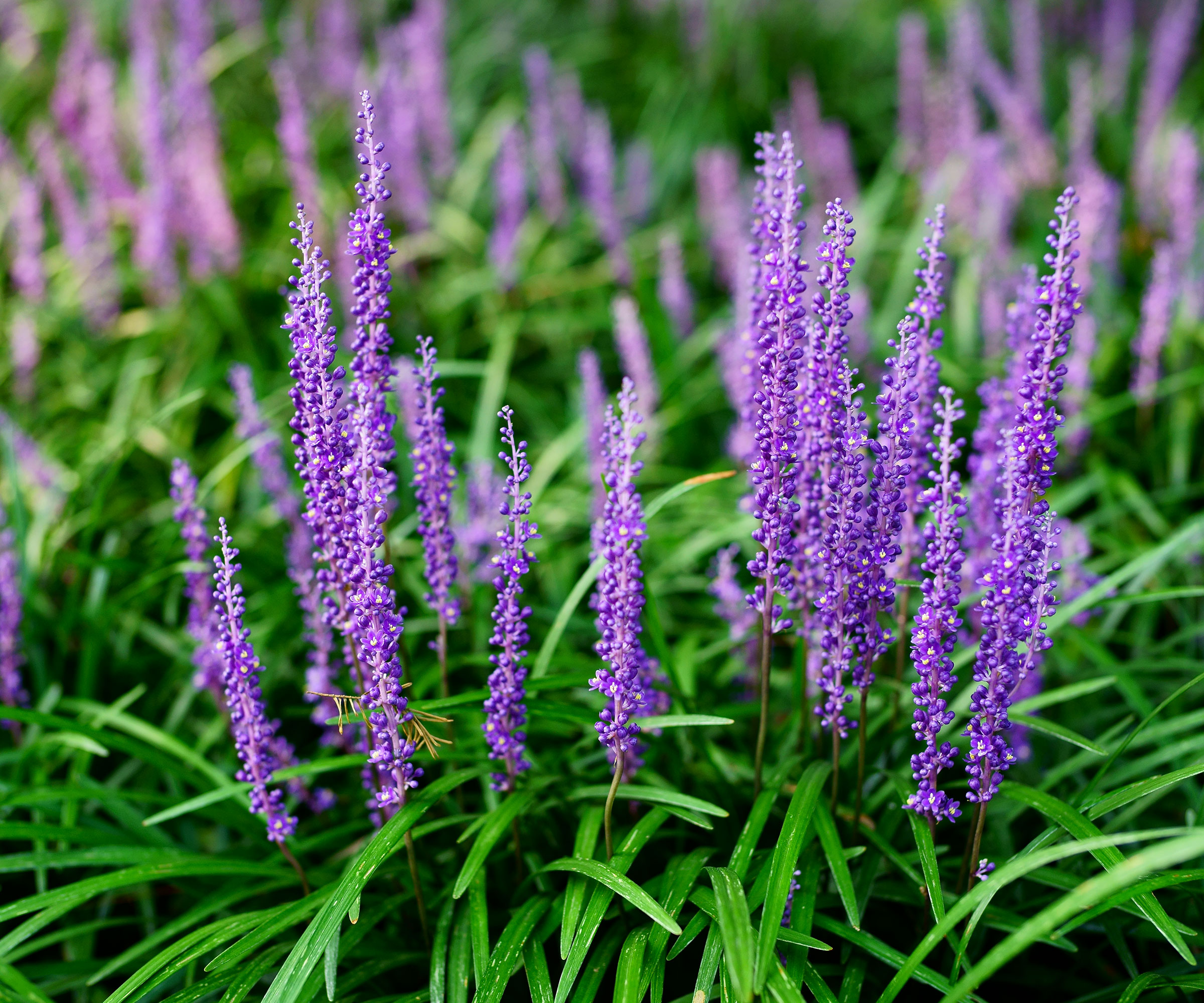
Liriope muscari adds interest when planted under taller varieties
When to avoid using ground cover plants
If you have a small plot avoid ground cover that are fast-growing and invasive plants.
Lily of the valley is a late spring perennial favourite for scented ground cover but unless checked it can spread fast via its underground rhizomes.
Similarly, some hardy geraniums, while offering color and reliable cover, will self-seed quickly around the yard. So be careful what you buy, and do your research first!
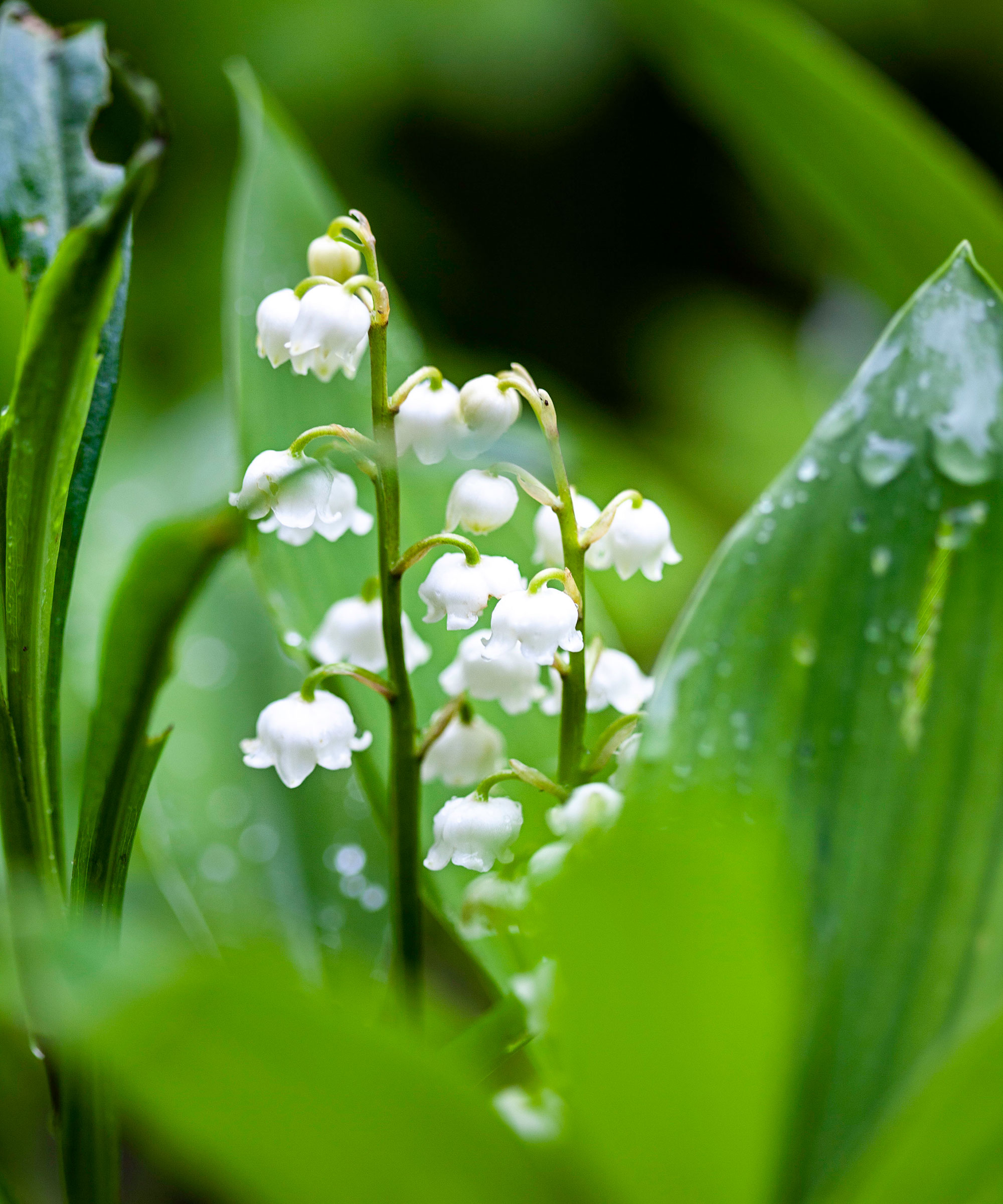
Lily of the valley is a popular spring plant for scent but it can be invasive
If you like a garden with a natural look that benefits wildlife, you can also use ground cover plants as part of your patio scheme, letting hardy geraniums, herbs and sedum pop up among the paving cracks and tumble over patio walls for a stunning effect.

Ruth is a Contributing Editor for Homes & Gardens, and formerly Gardening Editor of Amateur Gardening magazine. She is horticulturally trained, with a qualification from the Royal Horticultural Society. Her work for Amateur Gardening, the world's oldest weekly gardening publication, involved matching gardening tasks with each season, covering everything from sowing and planting, to pruning, taking cuttings, dealing with pests and diseases and keeping houseplants healthy. She is an expert in ornamental plants and edible crops, and everything she writes about and photographs is in her own garden, that has been a work in progress since her family moved there in 2012.